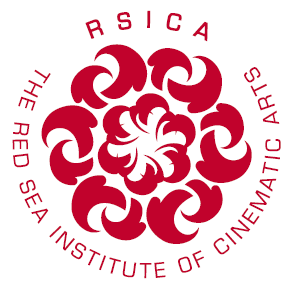
The cinema of Australia began with the 1906 production of The Story of the Kelly Gang, arguably the world's first feature film. Since then, Australian crews have produced many films, a number of which have received international recognition. Many actors and filmmakers with international reputations started their careers in Australian films, and many of these have established lucrative careers in larger film-producing centres such as the United States.

An independent film, independent movie, indie film, or indie movie is a feature film or short film that is produced outside the major film studio system in addition to being produced and distributed by independent entertainment companies. Independent films are sometimes distinguishable by their content and style and how the filmmakers' artistic vision is realized. Sometimes, independent films are made with considerably lower budgets than major studio films.
A film school is an educational institution dedicated to teaching aspects of filmmaking, including such subjects as film production, film theory, digital media production, and screenwriting. Film history courses and hands-on technical training are usually incorporated into most film school curricula. Technical training may include instruction in the use and operation of cameras, lighting equipment, film or video editing equipment and software, and other relevant equipment. Film schools may also include courses and training in such subjects as television production, broadcasting, audio engineering, and animation.

Despite having a flourishing Chinese and Malay film industry in the 1950s and 1960s, Singapore's film industry declined after independence in 1965. Film production increased in the 1990s, which saw the first locally produced feature-length films. There were a few films that featured Singaporean actors and were set in Singapore, including Saint Jack, They Call Her Cleopatra Wong and Crazy Rich Asians.

Cinema of the Netherlands refers to the film industry based in the Netherlands. Because the Dutch film industry is relatively small, and there is little or no international market for Dutch films, almost all films rely on state funding. This funding can be achieved through several sources, for instance through the Netherlands Film Fund or the public broadcast networks. In recent years the Dutch Government has established several tax shelters for private investments in Dutch films.

The Irish film industry has grown somewhat in recent years thanks partly to the promotion of the sector by Fís Éireann/Screen Ireland and the introduction of heavy tax breaks. According to the Irish Audiovisual Content Production Sector Review carried out by the Irish Film Board and PricewaterhouseCoopers in 2008 this sector, has gone from 1,000 people employed six or seven years ago, to well over 6,000 people in that sector now and is valued at over €557.3 million and represents 0.3% of GDP. Most films are produced in English as Ireland is largely Anglophone, though some productions are made in Irish either wholly or partially.

Middle Eastern cinema collectively refers to the film industries of West Asia and part of North Africa. By definition, it encompasses the film industries of Egypt, Iran, Bahrain, Iraq, Israel, Jordan, Kuwait, Lebanon, Palestine, Oman, Qatar, Saudi Arabia, Syria, United Arab Emirates, and Yemen. As such, the film industries of these countries are also part of the cinema of Asia, or in the case of Egypt, Africa.

The Red Sea Institute of Cinematic Arts (RSICA) is MFA program in Cinematic Arts and is based in Aqaba, Jordan. RSICA is a joint effort of Royal Film Commission – Jordan and the University of Southern California School of Cinematic Arts.

The cinema of Somalia refers to the film industry in Somalia. The earliest forms of public film display in the country were Italian newsreels of key events during the colonial period. In 1937 the film Sentinels of Bronze was produced in Ogaden Somalia, with nearly all Somali actors. Growing out of the Somali people's rich storytelling tradition, the first few feature-length Somali films and cinematic festivals emerged in the early 1960s, immediately after independence. Following the creation of the Somali Film Agency (SFA) regulatory body in 1975, the local film scene began to expand rapidly. In the 1970s and early 1980s, popular musicals known as riwaayado were the main driving force behind the Somali movie industry. Epic and period films as well as international co-productions followed suit, facilitated by the proliferation of video technology and national television networks. In the 1990s and 2000s, a new wave of more entertainment-oriented movies emerged. Referred to as Somaliwood, this upstart, youth-based cinematic movement has energized the Somali film industry and in the process introduced innovative storylines, marketing strategies and production techniques.
Arab cinema or Arabic cinema refers to the film industry of the Arab world. Most productions are from the Egyptian cinema.

Cinema of Palestine is relatively young in comparison to Arab cinema as a whole. Palestinian films are not exclusively produced in Arabic and some are even produced in English and French. Elia Suleiman has emerged as one of the most notable working Palestinian directors.

The cinema of Cyprus came into existence much later than the cinema of most other countries, with the late 1960s generally being accepted as its earliest history, and it has generally undergone extremely slow growth due to the island's small population, geographical location, a lack of interest, and more attention being given to local political tensions.

The cinema of Moldova developed in the early 1960s during the Soviet period, experiencing a flowering of about a decade and a half. Stagnation followed, and after the Moldavian SSR became independent in 1991, the industry almost completely disappeared.
The inaugural moment of Syrian cinema is said to be the release of Al-Mutaham al-Bari in 1928. Actors from neighboring countries, as well as France, have influenced the Syrian film industry.
The Amman Filmmakers Cooperative(in Arabic) promotes independent Jordanian and Palestinian Diaspora filmmaking through training, experimentation, and networking. The Cooperative seeks to empower student filmmakers to produce films using very nominal resources and with the help of digital filmmaking tools. The Cooperative also manages the Jordan Short Film Festival, an art film festival established in 2004.
A growing number of film festivals are held in the Arab world to showcase films from the region as well as international standouts. In addition, institutions and organizations in other parts of the world are increasingly honoring the new generation of filmmakers in the Arab world with Arab film festivals.

Cinema in Qatar is a relatively young industry that evolved as part of the country’s plans to develop different local sectors with the aim of accumulating international recognition and status. Many major steps were taken to implement a long-term plan to develop the infrastructure as well as giving opportunities to local talents to have a platform that establishes their presence within the film industry with the support of the Doha Film Institute, and their various grants, workshops and festivals. The Qatar National Vision 2030 has three major pillars to development: human, social economic and environmental; this vision provides frameworks that enable the development of different elements within Qatar and its society; one of which is the high importance put on developing and cultivating artistic talents to represent and define Qatar on a global scale. Another important element in developing the movie industry is the influence and vision of Sheikha Al Mayassa who founded Doha Film Institution; the establishment of film as a mode of storytelling was imperative because it serves the purpose of granting Qatar a global presence through the talents that are supported and cultivated because of her initiative. The film industry plays a role in amplifying the Qatari national identity alongside the identity of the Arab world as a whole.
Cinema of Sudan refers to both the history and present of the making or screening of films in cinemas or film festivals, as well as to the persons involved in this form of audiovisual culture of the Sudan and its history from the late nineteenth century onwards. It began with cinematography during the British colonial presence in 1897 and developed along with advances in film technology during the twentieth century.
The cinema of Mauritius does not have a long-established and continuous tradition and organization. However, there have been recent efforts to encourage international filmmakers to shoot on the island and establish an indigenous film industry. Both Western and Indian movies are watched by Mauritians.
Talal Afifi is a Sudanese film curator and producer. Further, he is the director of the Khartoum-based Sudan Film Factory as well as of the Sudan Independent Film Festival and has helped train a new generation of Sudanese filmmakers since 2009.











